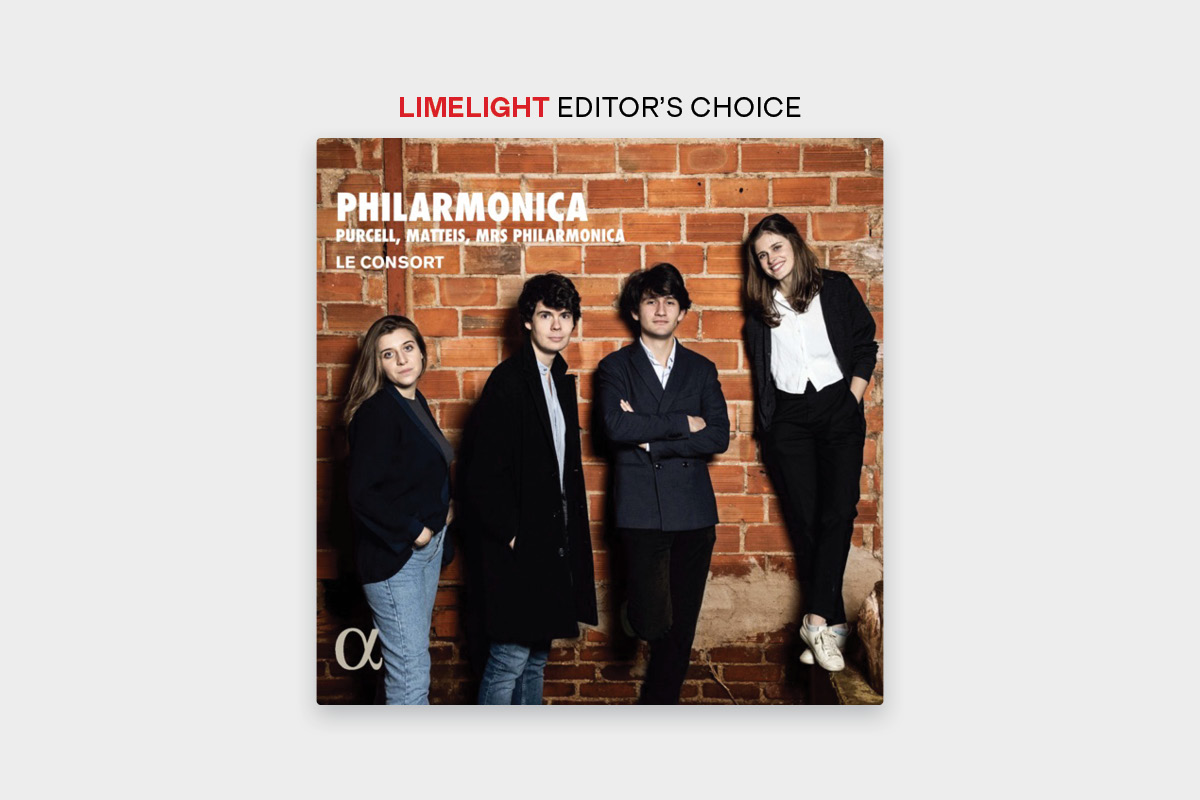Reading Le Consort’s short booklet note which precedes the more substantial commentary on the music by Simon Jones, you might be forgiven for thinking the Elizabethan melancholy of a previous generation was still alive and well in the late 17th and early 18th centuries: witness phrases such as “Anglo-Italian melancholy”, “English mournfulness”, “despairing sadness” and “hypersensitive expressiveness”.

Yet such sentiments are given greater weight by this deliciously lachrymose music by Nicola Matteis (c.1649-1699), Henry Purcell (1659-1695) and the mysterious Mrs. Philharmonica (fl. 1715). And by the “hypersensitive expressiveness” of the performances by youthful French ensemble Le Consort, whose centre of gravity is very much the Baroque trio sonata.
The Italian Matteis brought to England a Neapolitan virtuosity and exuberance matched by a darker dramatic strain worthy of Caravaggio. Purcell successfully served church, court and theatre alike by wedding a homegrown penchant for plangent polyphony to sunnier Italian and French stylistic traits. Mrs. Philharmonica explored her gifts anonymously (or at least pseudonymously) through a rich Handelian blend of German, English and Italian influences.
A hallmark of the playing...










Comments
Log in to join the conversation.